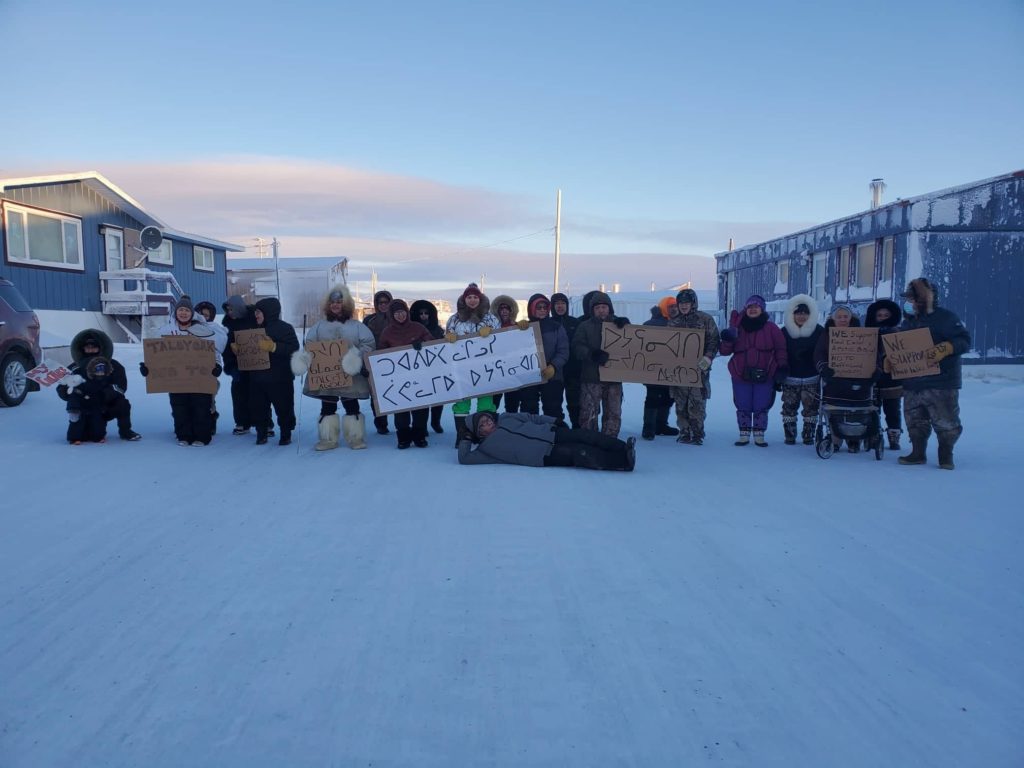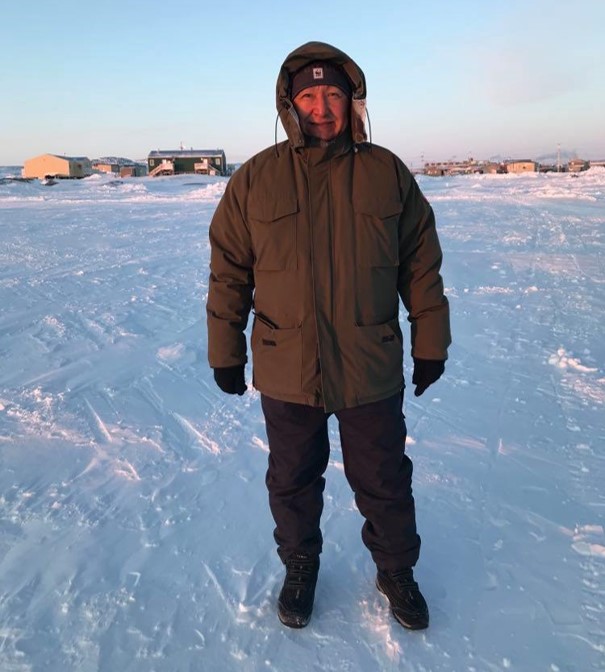Saying no to the Baffinland mine expansion in Nunavut
This article originally appeared in The Circle: The Arctic Under Pressure.
By Sarah MacFadyen
Located on the northern tip of Nunavut’s Baffin Island, Baffinland’s Mary River Mine produces 6 million metric tonnes of iron ore every year. It’s already the biggest industrial development project in the Canadian Arctic, but the company wants to double its production to 12 million tonnes per year. It also plans to build a dedicated 110-kilometre railway to transport ore to a port in Milne Inlet.
Inuit in the area are concerned about the effects that a railway and increased shipping traffic could have on the region, and a public hearing has been taking place in Iqaluit and Pond Inlet since 2019 to discuss the expansion. Paul Okalik, WWF–Canada’s lead Arctic specialist, is participating in the hearings. As he told The Circle, without strong environmental safeguards, the project will have long-term negative consequences for local wildlife and Inuit communities.

What communities and species call the area around the mine home?
The area that is being mined is home to the northern part of the Tuktu (barren ground) caribou herd, which has already declined to extremely low numbers. The marine part of the project is home to narwhals in the summer months, which are a food source for the primarily Inuit communities of Pond Inlet and Arctic Bay, north of the mine. South of the mine is the community of Clyde River. These are the three communities that are bearing the brunt of the project.
The mine has already had an impact on the hunters and the animals that depend on the area. I explained during the hearings that there’s less fish and less seal, and the narwhals have been displaced. Further inland, at the mine site, iron ore dust is turning the roadsides into red earth where traditionally there was nice soil for animals. Hunters are also not allowed to drink water in the vicinity of the mine.
This would be the first railway in Canada’s Arctic. How could it affect the caribou herd, which migrates in the area?
A railroad is a permanent structure, and steel railways will likely scare caribou away from the area. That’s a real concern for the Inuit. Right now, there is a 100 kilometre mining road in Baker Lake in the central part of Nunavut that’s been in place for a while. Studies have shown that when there’s constant traffic on that road, the migratory patterns of the caribou are affected. But when the road is shut down for a two-week period, the caribou can travel back and forth freely.
In the years when there has been no shutdown, the caribou have been unable to migrate to their wintering or summer areas. Considering these impacts, a permanent railway with ongoing traffic and rail cars is a real concern.
What do you think the long-term consequences will be for other wildlife, whether marine or terrestrial?
The Arctic char have already been affected. The community has noticed that fewer fish are being caught in the vicinity of the port. There is already constant ship traffic, with about 150 ship transits a year, and they want to double that. Seals in the area have also been displaced from where they would normally have their pups in the early spring. And as I mentioned earlier, the narwhals have pretty much been displaced and scattered in the summer months. Those things are happening now at six million metric tonnes, and they want to double that? So, God knows what’ll happen.

How have the communities managed to voice their concerns?
It has been difficult. These meetings have often included technical sessions along with community days. The technical sessions have been challenging because the rules were changed midway through, when the board felt time was running out. That really confined our ability to take part. But we have argued that this project will have an ongoing impact on the surrounding communities. Understandably, some of the community members held a very public protest and blockade of the mining road and the mine’s airport. Their message was, “Look, slow down. We have concerns with this. We would like to be heard.” That blockade was a first up here, and it had broad support from outlying communities. The communities want to be heard.
What steps would you like to see taken to mitigate the impact of this mine?
The communities have a real concern about the shipping activity, because it’s daily and constant, and it’s having an impact on their environment, particularly the narwhal harvest, which is a big food source for them. They want to find ways to reduce that impact. Instead of trying to increase production, let’s find ways to reduce the impact it’s having already. So that’s one part.
The company has already shipped up the railroad tracks at the mine port site area and an enclosed crusher. Those are up there now even though they’re not being utilized because the assumption is that the project will be approved. The current project employs a crusher that’s not enclosed, so all the dust is blown onto the land and down the tundra. It’s just a matter of time before that area will become like a wasteland as all the vegetation is weighed down by the iron ore dust.
During the hearings, I asked, “Can’t you just replace the current crusher with this enclosed crusher to limit your impact on the environment?” That is something that I would like the environmental board to review and recommend: let’s use this structure to limit the dust being produced. That’s another area that needs to be looked at during these proceedings.
Where do things stand now with this expansion proposal?
The mining company always tries to pressure the communities by saying that if the expansion is not approved, they’ll shut down the mine. Well, so what? The last week of hearings were supposed to proceed in April, but then COVID-19 struck in Iqaluit, where the hearings were taking place. We’ll have to find a week for the communities to take part in the hearings and have their issues heard. Once that’s been done, then the environmental board will write a report with recommendations and submit it to the federal minister, who will then have to decide whether to accept, reject or vary the project proposal.
I think a “nay” at this point is the only way to proceed so that we can find ways to reduce the impact the project is already having on Pond Inlet and the surrounding communities.

